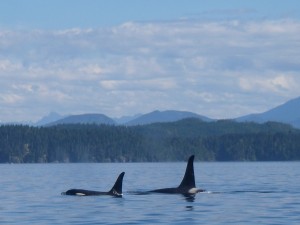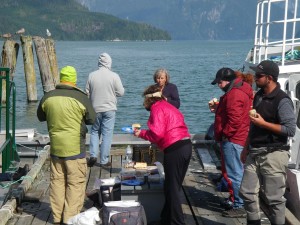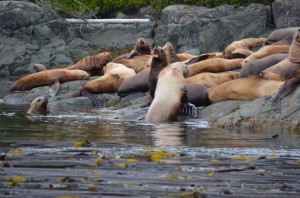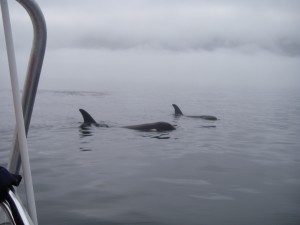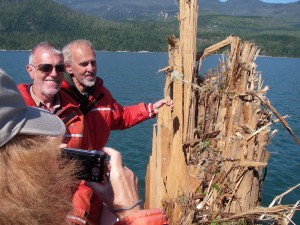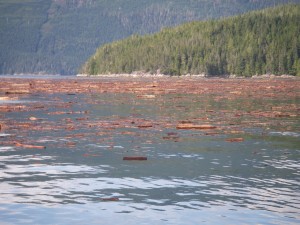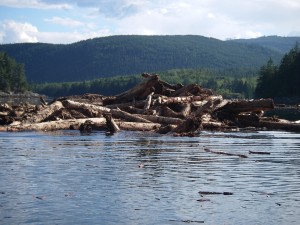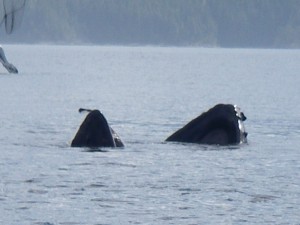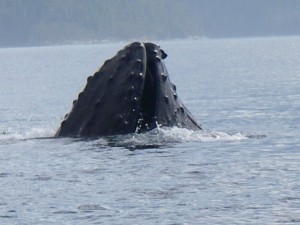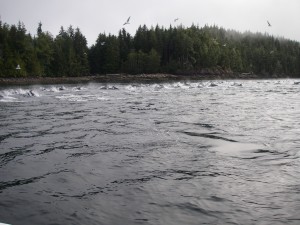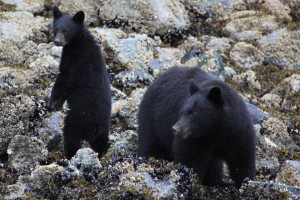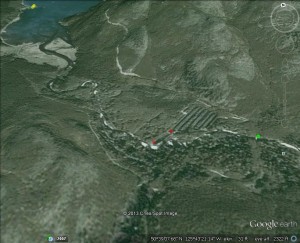
Once you have read the description below the map can be enlarged by clicking once on the photo and then once again and the photo should take the full screen.
The above photo is a selection taken from Google Earth that shows the Glendale River estuary in the upper left corner of the map. The river estuary is about 42 kilometers (26 miles) an hour and fifteen-minute boat ride from Grizzly Bear Lodge. Upon arriving at the river mouth the boat is tied to a float which is indicated by the yellow dots in the extreme upper left corner. Once at the float a flat bottom skiff is used to get to shore and the truck, which is used to drive to the spawning channel. The road runs along the estuary and the river past the base of the hills in the lower left section of the map and then curves to the green dot, which is a bridge over the Glendale River.
The zig zag line of trees are along the edge of the man made spawning channel. The road pass beside the top (right) edge of the last finger of the spawning area and then across and past the curves of the rest of the channels to the first red dot which is the first viewing stand. The second red dot is the stand normally used by Grizzly Bear Lodge. The area between the two red dots is a finger of land with the natural river on the right side and around the end of the finger to the holding pool on the left (top) side. The salmon holding pool is a result of an aluminum weir or small dam at the entrance to the spawning channel. This may be raised or lowered depending on how many salmon have entered the channel. The second stand is the preferred viewing area as there is an unobstructed view of the river and the holding pool and photos due not need to show the aluminum weir in the background.
If you go to “Pages” on the left and select “Gogle Map of Lodge Itinerary” and click the blue icon on the right it will be “Day 3” and be the location of the map shown above.
